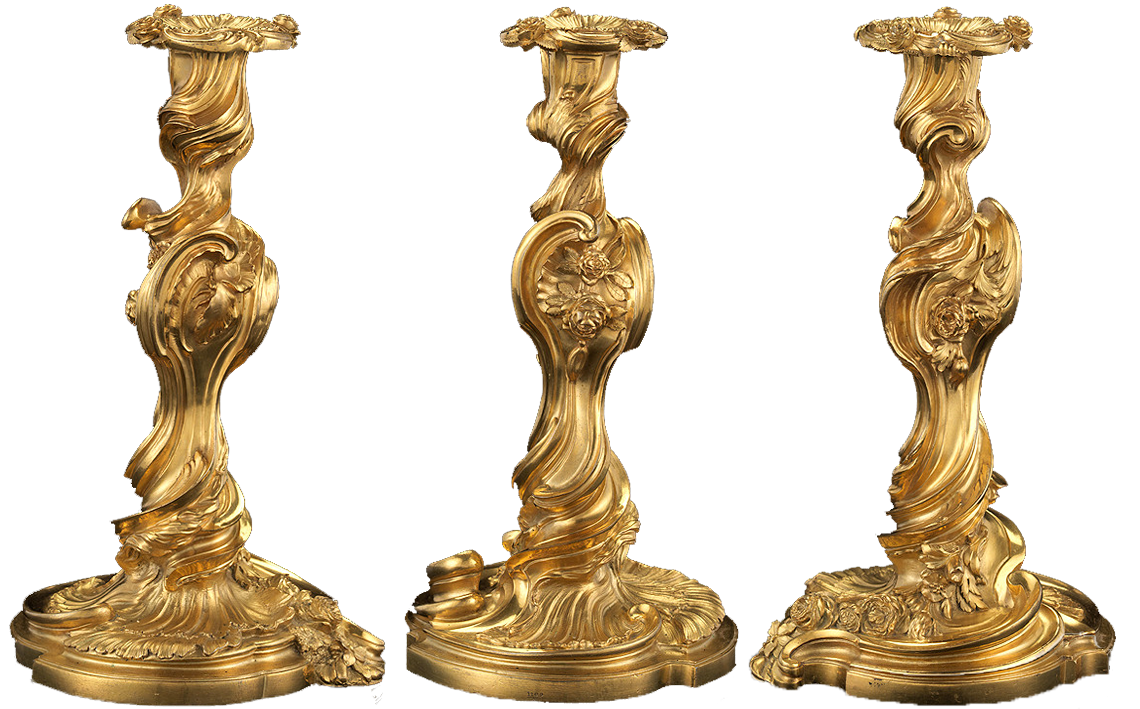Gilt bronze played a key role in eighteenth-century French décor, and was featured prominently on furniture and porcelain mounts, as well as light fixtures, candlesticks, and clocks. The production of gilt bronze was costly and labor intensive, and the process was closely regulated by the French guild system, whose regulations required a piece to pass through two separate guilds before it could be finished. To begin, a wooden or clay 3D model was made from a drawing, and then a wax model would be pressed into sand, which could then accept the molten bronze. After the bronze cooled, the chaser (ciseleur) used a variety of tools to texture the bronze, adding fine detail to the bronze. Finally, the gilder (doreur) would cover the bronze in a special mixture of mercury and ground gold and heat it. The process caused the mercury to evaporate, and the gold to attach to the bronze; it was repeated until the piece was adequately covered.

Candlestick, after designs by Juste Aurèle Meissonnier, ca. 1735-50,
Metropolitan Museum of Art (1999.370.1a, b, .2a, b)

Because of the swirling asymmetry that was fashionable in early 18th century France, these candlesticks required three separate drawings, one per side, to show the full design to the caster. This candlestick shows the many different ways the chaser could treat the bronze in order to give it texture, giving individual flowers character and emphasizing the elaborate swirls characteristic of what was then called style modern or style rocaille.

